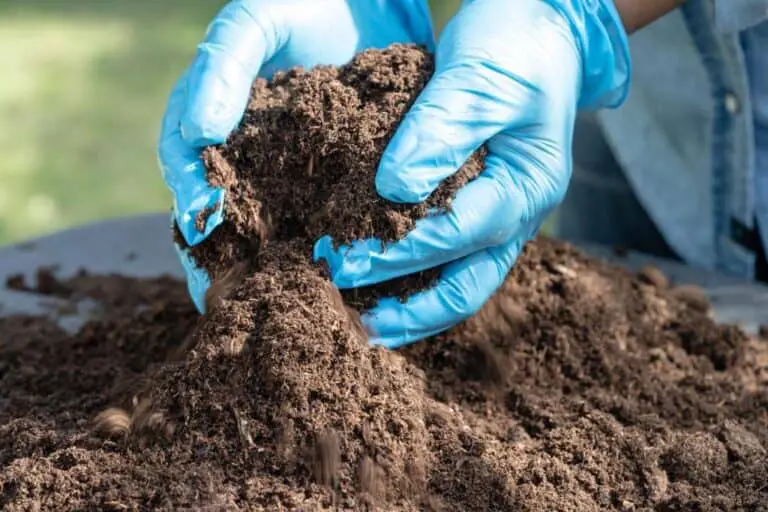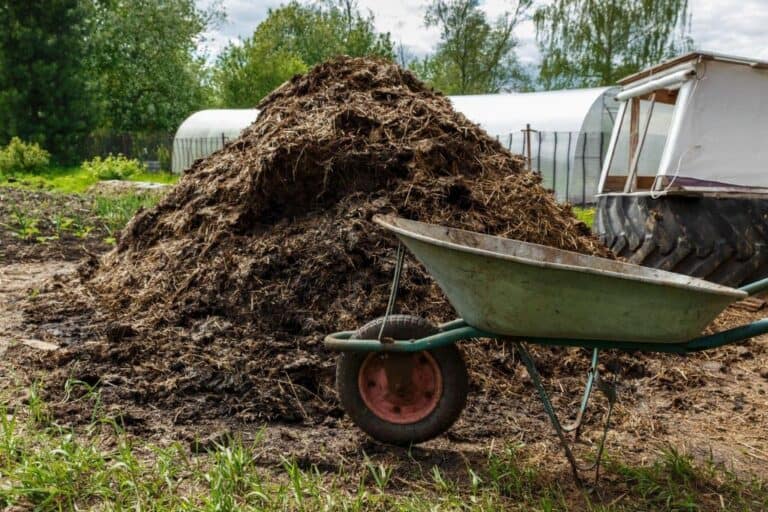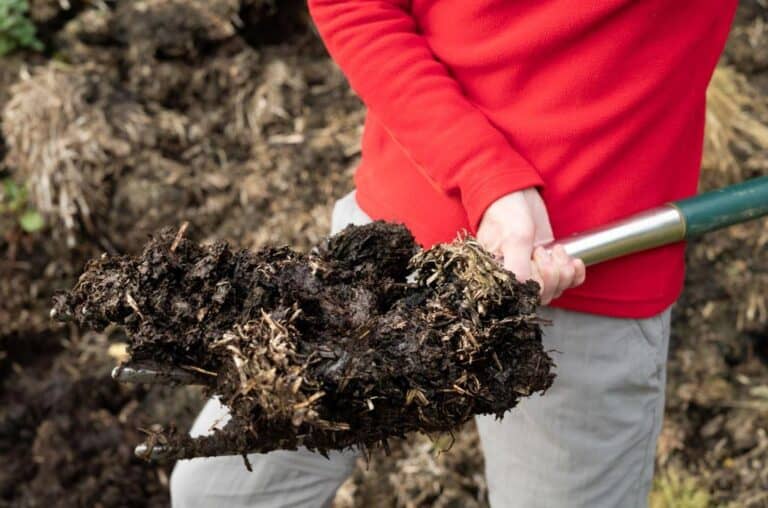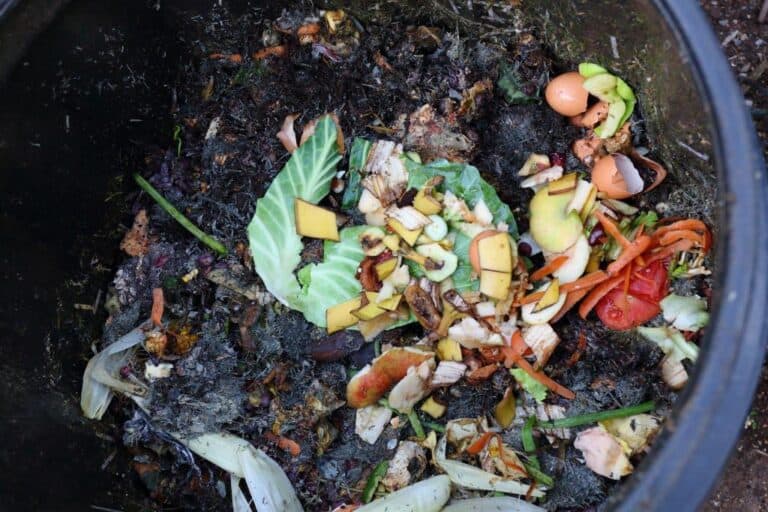Does Sterilizing Soil Remove Nutrients? Nutrient Loss in Sterilized Soil
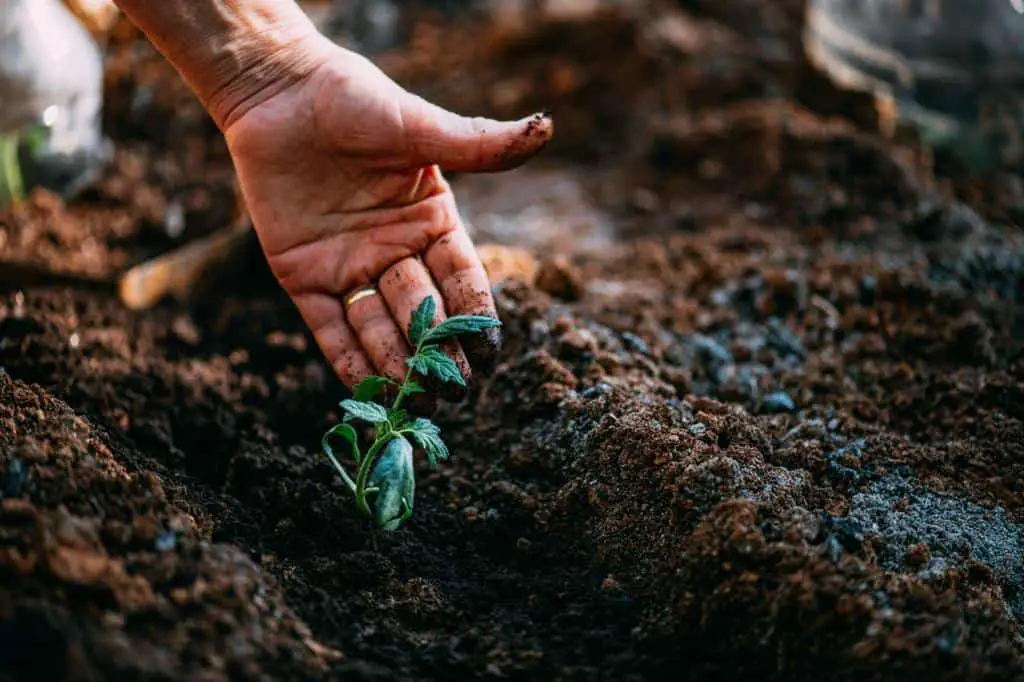
Picture this: a garden teeming with vibrant flowers, lush vegetables, and thriving greenery. As a gardener, your heart swells with pride and joy at the sight of your horticultural haven. Unfortunately, unwelcome intruders like disease-carrying pests, aggressive weeds, and soil-borne villains that lurk beneath the surface occasionally disrupt the peace of this idyllic scene. To restore harmony and safeguard your garden’s health, soil sterilization comes to the rescue.
Yet, a nagging doubt persists: Does sterilizing soil come at a cost? Are the precious nutrients that nurture your precious plants also sacrificed in the process?
Sterilizing soil can remove some nutrients and beneficial microbes from the soil. It can also speed up the breakdown of organic material in the soil, which can release nutrients that plants can use.
Fret not, for we are here to uncover the secrets behind soil sterilization and its mysterious dance with essential nutrients. In this exploration, we will unveil the truth, shedding light on how to balance the scales and ensure your green oasis thrives in its purest form.
Join us as we journey through the realms of horticulture, revealing the wonders of soil sterilization and the delicate art of preserving nutrients, even after the soil has undergone its transformative purification.
Understanding Soil Sterilization
Soil sterilization is a technique used to eliminate harmful pathogens, pests, and weed seeds from the soil. By subjecting the soil to various treatments like heat, chemicals, or radiation, the goal is to create a clean slate for planting, like a sterilized soil starting mix.
There are several methods of soil sterilization, each with its own unique approach. The most common methods include using steam, fumigants, solarization, and irradiation. Each technique has its advantages and challenges, impacting soil and nutrients differently.
Soil sterilization is commonly employed in situations where soil-borne diseases and pests pose a significant threat to crops. It is often used in commercial agriculture, greenhouse settings, and nurseries to ensure successful and disease-free plant growth.
The Process of Soil Sterilization
The process of soil sterilization involves a series of carefully orchestrated steps. First, the soil is prepared and moistened to the right consistency. Then, the chosen sterilization method is applied to the soil, with precise control over factors like temperature and exposure time.
The success of soil sterilization depends on several factors, including soil type, moisture content, temperature, and the method used. Getting these variables right is crucial to achieving the desired outcome while minimizing nutrient loss.
Each soil sterilization method has its pros and cons. Some techniques, like solarization, are eco-friendly and cost-effective but may require longer exposure times. On the other hand, chemical fumigation may be quicker, but it raises concerns about environmental impact and nutrient depletion.
Does Soil Sterilization Remove Nutrients?
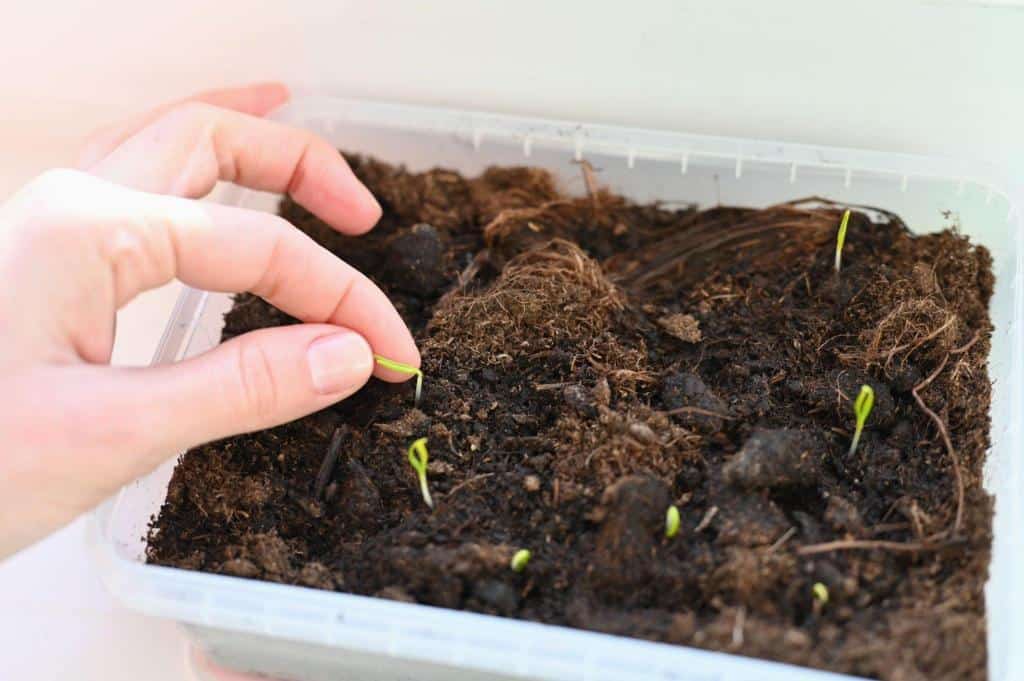
The process of soil sterilization, unfortunately, does have some downsides. One of the main concerns among gardeners is whether it removes essential nutrients from the soil. Let’s take a closer look at how soil sterilization affects nutrient content:
| Nutrient | Effect of Soil Sterilization |
| Nitrogen | Some nitrogen loss can occur due to the volatilization of ammonia during steam sterilization. However, this loss is not significant, and nitrogen levels can often be replenished with proper fertilization. |
| Phosphorus | Phosphorus is relatively stable and does not undergo significant losses during soil sterilization. |
| Potassium | Similar to phosphorus, potassium is not substantially affected by the sterilization process. |
| Micronutrients | Sterilization may cause minor losses of some micronutrients, but these are usually easily available in the soil and can be replenished through appropriate fertilization. |
It is important to note that while some nutrient loss may occur during soil sterilization, the impact is generally not drastic. With the right approach to fertilization, the nutrient levels can be brought back to an optimal range for plant growth.
The Impact of Soil Sterilization on Nutrients
One of the main concerns with soil sterilization is the potential loss of essential nutrients during the process. Nutrients like nitrogen, phosphorus, potassium, and micronutrients play a vital role in supporting plant growth and development.
Certain nutrients are more susceptible to depletion during soil sterilization. For instance, nitrogen can be lost through volatilization, while water-soluble nutrients might leach out during the process.
The impact of soil sterilization on nutrients can vary depending on the method used. High-temperature techniques like steam sterilization may lead to greater nutrient loss, while other methods might have milder effects.
Analyzing the Pros and Cons of Nutrient Removal
When it comes to soil sterilization, a crucial consideration is the removal of nutrients from the soil. While the technique effectively eliminates harmful pests and pathogens, it can also impact the overall health of the soil. Let’s delve into the pros and cons of nutrient removal in soil sterilization to better understand its implications.
Pros of Nutrient Removal in Soil Sterilization
- Pest and Pathogen Control: Soil sterilization is an effective method to rid the soil of harmful organisms that can damage crops and hinder plant growth. By removing these threats, sterilization creates a clean slate for healthier plant development.
- Reduced Competition: Nutrient removal can temporarily reduce competition between plants and weeds. With fewer nutrients available, weeds struggle to thrive, allowing cultivated plants to establish themselves better.
- Enhanced Precision: In soil sterilization, nutrients can be reintroduced in controlled amounts, providing an opportunity for precise and targeted nutrient management. This allows farmers and gardeners to tailor nutrient levels to the specific needs of their crops.
Cons of Nutrient Removal in Soil Sterilization
- Nutrient Depletion: Soil sterilization not only removes harmful organisms but also depletes essential nutrients. Without proper nutrient replenishment, the soil may become less fertile, hindering long-term plant growth.
- Imbalanced Soil Microbiome: The removal of beneficial microorganisms alongside harmful ones disrupts the delicate balance of the soil microbiome. This imbalance can impact nutrient cycling and overall soil health.
- Increased Dependency on Fertilizers: Nutrient removal may lead to an increased reliance on synthetic fertilizers to supplement the soil’s nutrient levels. This can have financial and environmental implications.
While soil sterilization can be a valuable tool in pest and pathogen control, its impact on nutrient removal requires careful consideration. To mitigate the negative consequences, implementing proper nutrient management practices and organic soil amendments is essential. By striking a balance between sterilization and nutrient replenishment, farmers and gardeners can maintain a healthy and thriving soil ecosystem for sustainable crop production.
Best Practices to Retain Essential Nutrients During and After Soil Sterilization
Retaining essential nutrients during and after soil sterilization is crucial for maintaining soil fertility and supporting healthy plant growth. While soil sterilization effectively eliminates harmful pests and pathogens, it can also lead to nutrient depletion.
However, with the right practices, you can ensure that your soil remains nutrient-rich and conducive to robust plant development.
1. Pre-Sterilization Soil Testing: Before embarking on soil sterilization, conduct a comprehensive soil test to assess the nutrient levels and identify any deficiencies. Understanding your soil’s nutrient profile will help you tailor your post-sterilization nutrient management plan more effectively.
2. Organic Matter and Compost Application: Prior to sterilization, incorporate organic matter and compost into the soil. These nutrient-rich amendments can replenish essential elements and promote microbial activity, setting the stage for healthier soil after sterilization.
3. Targeted Fertilization: After the sterilization process, introduce fertilizers tailored to your soil’s needs. Utilize slow-release or organic fertilizers to avoid nutrient leaching and ensure a steady supply of essential elements for the plants.
4. Crop Rotation and Cover Cropping: Implement crop rotation and cover cropping practices to enhance nutrient retention in the soil. These techniques help break pest and pathogen cycles and maintain a balanced nutrient ecosystem.
5. Monitoring and Adjustment: Regularly monitor soil nutrient levels and plant health to assess the effectiveness of your nutrient management plan. Adjust fertilizer application as needed to address any imbalances and optimize plant growth.
6. Soil Microbiome Enhancement: Promote the development of a diverse and thriving soil microbiome through practices such as compost tea application and use of mycorrhizal fungi. A healthy soil microbiome enhances nutrient uptake by plants.
By adopting these best practices, you can maximize nutrient retention during and after soil sterilization. The key lies in thoughtful nutrient management, fostering a balanced soil ecosystem, and continually monitoring and adjusting your approach. With well-nourished soil, you can cultivate vibrant and resilient plants, setting the stage for bountiful harvests and sustainable gardening practices.
Alternatives to Soil Sterilization
Traditionally, soil sterilization has been a go-to method for eliminating pests, diseases, and weeds. However, as environmental concerns grow and the demand for organic and eco-friendly solutions rises, a shift towards greener alternatives has taken root.
This soil care leads us to explore a range of innovative techniques that not only protect our precious soil but also safeguard the delicate balance of the ecosystem.
Let’s unravel the possibilities that await, as we pave the way towards a more sustainable and thriving future for our lands and crops.
1. No-till Farming and Conservation Agriculture
No-till farming and other conservation agriculture methods promote minimal soil disturbance, preserving the natural soil structure and promoting soil health. By reducing soil disruption, these practices create a more stable environment for beneficial soil organisms while preventing the proliferation of pests and diseases.
2. Integrated Pest Management (IPM)
IPM is a holistic approach that emphasizes preventive measures and uses a combination of strategies to manage pests and diseases. By integrating cultural, biological, and chemical control methods, IPM aims to maintain pest populations at manageable levels without resorting to soil sterilization. This strategy prioritizes the long-term health of the soil and ecosystem.
3. Disease-Resistant Crop Varieties
Choosing disease-resistant crop varieties can significantly reduce the risk of soil-borne diseases. Planting crops that have natural resistance to specific pathogens can help maintain soil health while minimizing the need for sterilization.
4. Crop Rotation
Crop rotation involves alternating different crop species in a specific sequence to break pest and disease cycles. This practice disrupts the life cycles of soil-borne pathogens, reducing their population and impact on subsequent crops.
5. Biological Control
Introducing beneficial organisms, such as predatory insects or nematodes, can help control pests naturally. These beneficial organisms prey on harmful pests, keeping their populations in check without harming the soil ecosystem.
6. Compost and Organic Matter
Amending the soil with compost and organic matter improves soil structure, enhances nutrient retention, and fosters a thriving soil microbiome. Healthy soil is more resilient to pests and diseases, reducing the need for soil sterilization.
By adopting these alternative practices, farmers and gardeners can maintain soil health, reduce their reliance on soil sterilization, and foster sustainable agricultural practices. Each method brings unique benefits to soil management and pest control, emphasizing the importance of a multifaceted approach to promote long-term soil fertility and environmental harmony.
Learn: How to Sterilize Compost for Healthy Soil
Conclusion
In conclusion, soil sterilization is a valuable technique for controlling pests, diseases, and weeds in the garden. While it may lead to minor nutrient losses, these can be managed effectively through appropriate fertilization and soil management practices.
While the process of soil sterilization may raise concerns about nutrient depletion, our findings reveal a nuanced reality. Yes, some nutrient loss can occur during sterilization, but this is only part of the equation. The importance of beneficial microorganisms for soil fertility cannot be overstated. These unsung heroes play a pivotal role in nutrient cycling, transforming organic matter into valuable nutrients that nourish plants.
As we conclude this exploration, it’s clear that the story of nutrient loss in sterilized soil is multifaceted. It’s a delicate balance between creating a pathogen-free environment and maintaining the crucial nutrients that sustain plant life. The long-term effects of soil sterilization require careful consideration, acknowledging the intricate web of interactions that contribute to soil health and plant growth.
In the grand tapestry of gardening and agriculture, the question of whether sterilizing soil removes nutrients is not one of black and white, but rather a symphony of shades and hues. As stewards of the land, our task is to harness the power of knowledge and innovation to strike harmony between sterility and fertility, ensuring a vibrant and flourishing future for our crops and gardens.
Remember that healthy soil is the foundation of successful gardening, and maintaining nutrient-rich soil is essential for robust plant growth. By combining soil sterilization with proper post-sterilization nutrient management, you can create an ideal environment for your plants to flourish.
FAQs on Sterilizing Soil Remove Nutrients
Does soil sterilization kill all bacteria?
No, soil sterilization doesn’t necessarily kill all bacteria. While it can eliminate harmful pathogens, some bacteria can survive due to their resilience or depth in the soil. However, the sterilization process significantly reduces the overall bacterial population.
What nutrients are essential for plant growth?
Plants require essential nutrients like nitrogen, phosphorus, potassium (NPK), as well as micronutrients like iron, zinc, and magnesium. These nutrients play vital roles in various plant functions, promoting healthy growth and development.
How long do nutrients remain in sterilized soil?
Nutrient retention in sterilized soil varies. Some nutrients may remain for a short time, while others can last longer. Regular fertilization and nutrient management practices are essential to replenishing nutrients as needed.
Can you reuse sterilized soil for multiple plantings?
Yes, sterilized soil can be reused for multiple plantings. However, it’s crucial to supplement the soil with nutrients and organic matter after each planting to maintain fertility.
Are there organic ways to sterilize soil?
Yes, organic soil sterilization methods exist. Solarization, using heat from the sun, and pasteurization are more eco-friendly alternatives to chemical-based sterilizers.
Is soil sterilization necessary for indoor gardening?
Soil sterilization isn’t always necessary for indoor gardening since indoor environments typically have fewer soil-borne pests. However, it can be beneficial for starting seedlings in a clean environment.
What are the disadvantages of soil sterilization?
Soil sterilization can negatively impact beneficial soil organisms, reducing overall soil health. It may also result in minor nutrient losses, necessitating careful nutrient management.
Does soil sterilization affect the pH of the soil?
Sterilization itself doesn’t significantly affect soil pH. However, changes in soil microbiota due to sterilization can indirectly influence pH levels over time.
Can soil sterilization prevent plant diseases entirely?
While soil sterilization reduces disease-causing pathogens, it cannot guarantee complete prevention. Good gardening practices, crop rotation, and disease-resistant plant varieties are also essential for disease management.
Is it possible to reestablish beneficial microbes after soil sterilization?
Yes, beneficial microbes can be reintroduced to the soil through organic matter and compost. Adding compost or beneficial microbial inoculants helps restore a healthy soil ecosystem.
Does the type of soil impact the nutrient loss during sterilization?
The type of soil can affect nutrient loss during sterilization. Sandy soils may experience higher nutrient leaching, while clay soils might retain nutrients better.
What are the potential risks of using chemical soil sterilizers?
Chemical soil sterilizers can harm beneficial organisms, contaminate groundwater, and have negative environmental impacts. They are often regulated due to their potential risks.
Can composting help restore nutrients to sterilized soil?
Yes, composting can help restore nutrients and improve soil structure. Incorporating compost into sterilized soil adds organic matter, enhancing nutrient retention.


